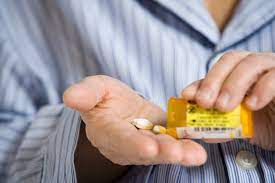Explore the important do’s and don’t of Blood thinner.
Blood clots are a significant problem. Deep vein thrombosis (DVT), a disorder in which a clot develops inside a sizable, deep vein, usually in the leg, raises the risk that it will get loose and migrate to the lungs. There, it may result in a pulmonary embolism, a blockage that can be fatal.
According to the Centers for Disease Control and Prevention, 60,000 to 100,000 People die from a pulmonary embolism every year and about 900,000 Americans suffer from DVT each year (CDC).
According to Mary Cushman, MD, director of the Thrombosis and Hemostasis Unit at the University of Vermont Medical Center in Burlington, deep vein thrombosis is “primarily a disease of age.”
“For women under 30, the risk is only 1 in 10,000 annually. Around age 40 or 45, there is a significant increase, and by the time you are 80 years old, your annual risk is 1 in 100, according to Dr. Cushman. According to Cushman, this is because as you get older, blood clots more frequently for unknown reasons.

According to the CDC, utilising hormone therapy, getting pregnant, or using birth control pills that include oestrogen all enhance a woman’s risk of developing deep vein thrombosis. Your risk may also be increased by severe illnesses, accidents, obesity, and extended periods of inactivity.
The good news is that blood-thinning drugs can prevent clots from developing, decrease their growth, or stop existing clots from causing damage to other body parts.
These medications, which include heparin, warfarin, and more recent ones like apixaban and rivaroxaban, all affect how blood clots in somewhat different ways.
Different types of blood thinners
Several forms of blood thinners include:
- Warfarin, commonly known as Coumadin, and other anticoagulants like heparin slow down the clotting process in your body.
- Antiplatelets, such as aspirin and clopidogrel, stop platelets, which are blood cells, from congregating to form a clot. Most patients who have had a heart attack or stroke take antiplatelets.
Tips for using Blood thinner
Prevent Falls and Bumps
A heart attack and stroke can be avoided by taking the blood thinner that your doctor ordered to prevent clots from forming in your heart or blood arteries. Yet, a slight wound might become dangerous since these medications make it difficult for you to stop bleeding.
Avoid engaging in contact sports and other risky activities. Choose safer exercises like walking or swimming instead. Remember to take care of your head! Even if there is a remote probability that you will be struck in the head, always wear a helmet.
Maintain a Schedule
Every day, take your medication at the same time. If you are inconsistent, some blood thinners may not operate as intended.
To remember yourself, use a pill organiser or the calendar on your smartphone. Take it as soon as you remember if you forget. Don’t miss a dose.
Ask your doctor what to do if you don’t know you missed a dosage until the next day. Do not multiply.
Learn About Your Drugs
Ask your doctor or pharmacist whether any new prescription or over-the-counter medications are safe to take with your blood thinner before bringing them home. Even vitamins and supplements have the ability to alter the effectiveness of some blood thinners or heighten their adverse effects. The risk of bleeding may increase, for instance, if you take an aspirin-containing painkiller or cold remedy.
Cut With Care
Blood thinners can cause a minor injury to bleed profusely. While using knives, garden shears, or other pointed instruments, put on gloves. When shaving, exercise additional caution. If you can, use an electric razor to avoid self-nicking. Keep your nail trimmings away from the skin wherever possible.
If you do cut yourself, push on the area until the blood stops flowing. If not, seek medical attention.
Take a test
Regular blood tests to monitor how quickly your blood clots may be necessary while you’re using specific blood thinners. Your doctor can alter your dose or switch you to a different medication based on the findings.
Make Your Medical Team Aware
Inform all of your medical professionals that you use blood thinners, especially before any procedures or if you receive a new prescription. They must be aware of your elevated risk of bleeding.
To let emergency medical personnel know that you are at danger for bleeding as well, wear a medical ID bracelet or tag. On a card that you keep in your wallet or purse, write down the name of your drug.
Take Care When Using Your Teeth
Because your gums are tender, brush your mouth gently. Don’t scrub; instead, use a gentle toothbrush. Choose some waxed dental floss, and carefully slide it between your teeth.
Be sure to tell your dentist if you take blood thinners. During checkups, they’ll take extra precautions, and they might also give you drugs to stop bleeding during dental work.
Consider the side effects
Blood thinners can sometimes result in:
- bluish gums
- Unable to describe bruises
- Dizziness
- heavier than usual period flow
- Red or dark brown stools or urine
If you experience any of these, contact your doctor.
Having supplies on hand
Have a supply of dressings and bandages on hand. Always keep some on hand in case you sustain a wound. A quick stop to a bleed using special powder will keep it under control until you can seek medical attention. At your neighbourhood pharmacy, you can get these products without a prescription. They are also safe to use when taking blood thinners.
REFERENCES:
- https://www.ahrq.gov/patients-consumers/diagnosis-treatment/treatments/btpills/btpills.html
- https://www.everydayhealth.com/heart-health/deep-vein-thrombosis/blood-thinner-dos-donts/
- https://medlineplus.gov/bloodthinners.html
- https://www.mercy.net/service/atrial-fibrillation/taking-blood-thinners-safely/
- https://www.webmd.com/heart-disease/ss/slideshow-tips-for-taking-blood-thinners
For more details, kindly visit below.